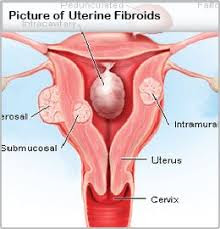FIBROIDS
Contents
Types
Causes
Risk factors
Symptoms
Diagnosis
Recommendation (Herbal Treatment)
07067485822 / 08162044999
WHAT ARE FIBROIDS?
Fibroids are abnormal
growths that develop in or on a woman’s uterus. Sometimes these tumors become
quite large and cause severe abdominal pain and heavy periods. In other cases,
they cause no signs or symptoms at all. The growths are typically benign, or
noncancerous. The cause of fibroids is unknown.
Fibroids are also known by
the following names:
leiomyomas
myomas
uterine myomas
fibromas
According to the Office on
Women’s Health, up to 80 percent Trusted Source of women have them by the age
of 50. However, most women don’t have any symptoms and may never know they have
fibroids.
DIFFERENT
TYPES OF FIBROIDS
The type of fibroid a woman
develops depends on its location in or on the uterus.
INTRAMURAL FIBROIDS:
Intramural fibroids are the
most common type of fibroid. These types appear within the muscular wall of the
uterus. Intramural fibroids may grow larger and can stretch your womb.
SUBSEROSAL
FIBROIDS:
Subserosal fibroids form on
the outside of your uterus, which is called the serosa. They may grow large
enough to make your womb appear bigger on one side.
PEDUNCULATED
FIBROIDS:
Subserosal tumors can
develop a stem, a slender base that supports the tumor. When they do, they’re
known as pedunculated fibroids.
SUBMUCOSAL
FIBROIDS:
These types of tumors
develop in the middle muscle layer, or myometrium, of your uterus. Submucosal
tumors aren’t as common as the other types.
CAUSES FIBROIDS
It’s unclear why fibroids
develop, but several factors may influence their formation.
1. Hormones
Estrogen and progesterone
are the hormones produced by the ovaries. They cause the uterine lining to
regenerate during each menstrual cycle and may stimulate the growth of
fibroids.
2. Family history
Fibroids may run in the
family. If your mother, sister, or grandmother has a history of this condition,
you may develop it as well.
3. Pregnancy
Pregnancy increases the production of estrogen and progesterone in your body. Fibroids may develop and grow rapidly while you’re pregnant.
Who
is at risk for fibroids?
Women are at greater risk
for developing fibroids if they have one or more of the following risk factors:
·
pregnancy
·
family history of fibroids
·
age of 30 or older
·
African-American
·
High body weight
·
v heavy
bleeding between or during your periods that includes blood clots
v pain
in the pelvis or lower back
v increased
menstrual cramping
v increased
urination
v pain
during intercourse
v menstruation
that lasts longer than usual
v pressure
or fullness in your lower abdomen
v swelling
or enlargement of the abdomen
NOTE:
Your symptoms will depend on
the number of tumors you have as well as their location and size. For instance,
submucosal fibroids may cause heavy menstrual bleeding and trouble conceiving.
If your tumor is very small
or you’re going through menopause, you may not have any symptoms. Fibroids may
shrink during and after menopause. This is because women undergoing menopause
are experiencing a drop in their levels of estrogen and progesterone, hormones
that stimulate fibroid growth.
HOW
ARE FIBROIDS DIAGNOSED?
For a proper diagnosis,
you’ll need to see a gynecologist to get a pelvic exam. This exam is used to
check the condition, size, and shape of your uterus. You may also need other
tests, which include:
An ultrasound uses
high-frequency sound waves to produce images of your uterus on a screen. This
will allow your doctor to see its internal structures and any fibroids present.
A transvaginal ultrasound, in which the ultrasound wand is inserted into the
vagina, may provide clearer pictures since it’s closer to the uterus during
this procedure.
This in-depth imaging test
produces pictures of your uterus, ovaries, and other pelvic organs.
HOW
ARE FIBROIDS TREATED?
Your doctor will develop a
treatment plan based on your age, the size of your fibroids, and your overall
health. You may receive a combination of treatments.
RECOMMENDED
FOOD
Dietary changes can help as
well.
Avoid meats and high-calorie
foods.
v Eat foods
high in flavonoids,
v Go
for green vegetables,
v Take
green tea (liv on tea);
v Cold-water fish such as tuna or salmon.
RECCOMMENDATION
DLT Herbal
Supplement
SUPER DOSE (Twice daily). Start, four days before menstruation. (Swallow with warm water)
DAABS (twice daily)
SAABFAT 5 (twice daily)
Herbal ZINC (twice daily)
Taking the above supplements can detach the root of the
fibroid and flows out during menstruation or shrinks it.
visit
https://chiviewmedia.blogspot.com/2020/09/what-to-know-about-pelvic-inflammatory.html
to know more about infection and infertility
OPTION B
SURGERY
Surgery to remove very large
or multiple growths may be performed. This is known as a myomectomy. An
abdominal myomectomy involves making a large incision in the abdomen to access
the uterus and remove the fibroids. The surgery can also be performed
laparoscopically, using a few small incisions into which surgical tools and a
camera are inserted. Fibroids might grow back after surgery.
If your condition worsens,
or if no other treatments work, your physician may perform a hysterectomy.
However, this means that you won’t be able to bear children in the future.
Noninvasive or minimally
invasive procedures
A newer and completely
noninvasive surgical procedure is forced ultrasound surgery (FUS). You lie down
inside a special MRI machine that allows doctors to visualize the inside of
your uterus. High-energy, high-frequency sound waves are directed at the
fibroids to ablate, or destroy, them.
Myolysis procedures (such as
Acessa) shrink fibroids using heat sources like an electric current or laser,
while cryomyolysis freezes the fibroids. Endometrial ablation involves
inserting a special instrument into your uterus to destroy the uterine lining
using heat, electric current, hot water, or extreme cold.
Another nonsurgical option
is uterine artery embolization. In this procedure, small particles are injected
into the uterus in order to cut off the fibroids’ blood supply.
What can be expected in the
long term?
Your prognosis will depend
on the size and location of your fibroids. Fibroids may not need treatment if
they’re small or don’t produce symptoms.
NOTE:
If you’re pregnant and have
fibroids, or become pregnant and have fibroids, your doctor will carefully
monitor your condition. In most cases, fibroids don’t cause problems during
pregnancy. Speak with your doctor if you expect to become pregnant and have fibroids.




















